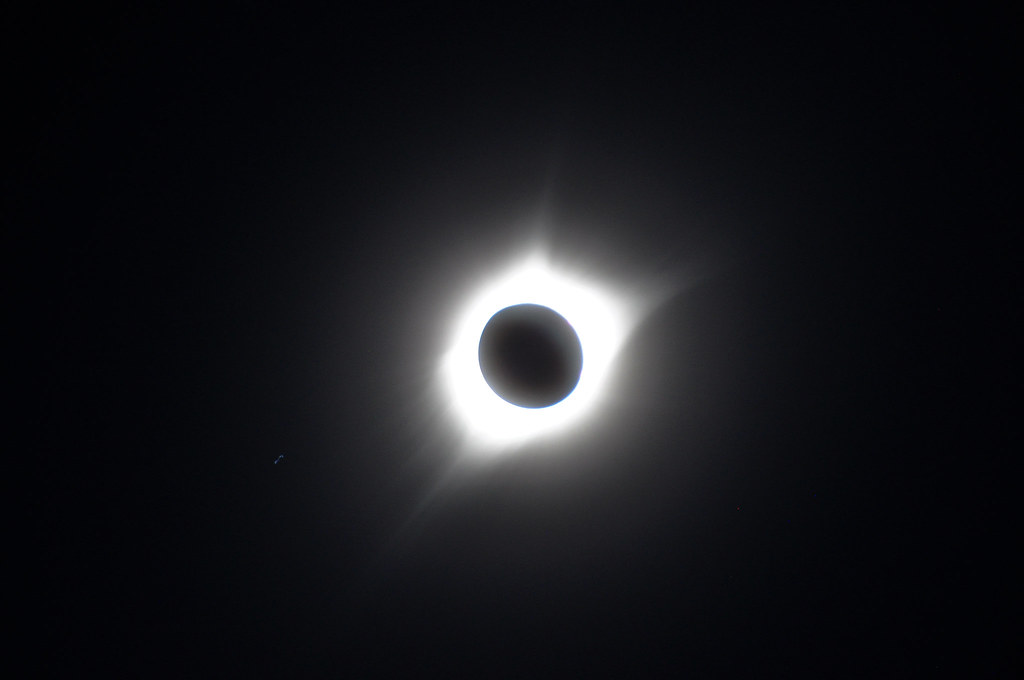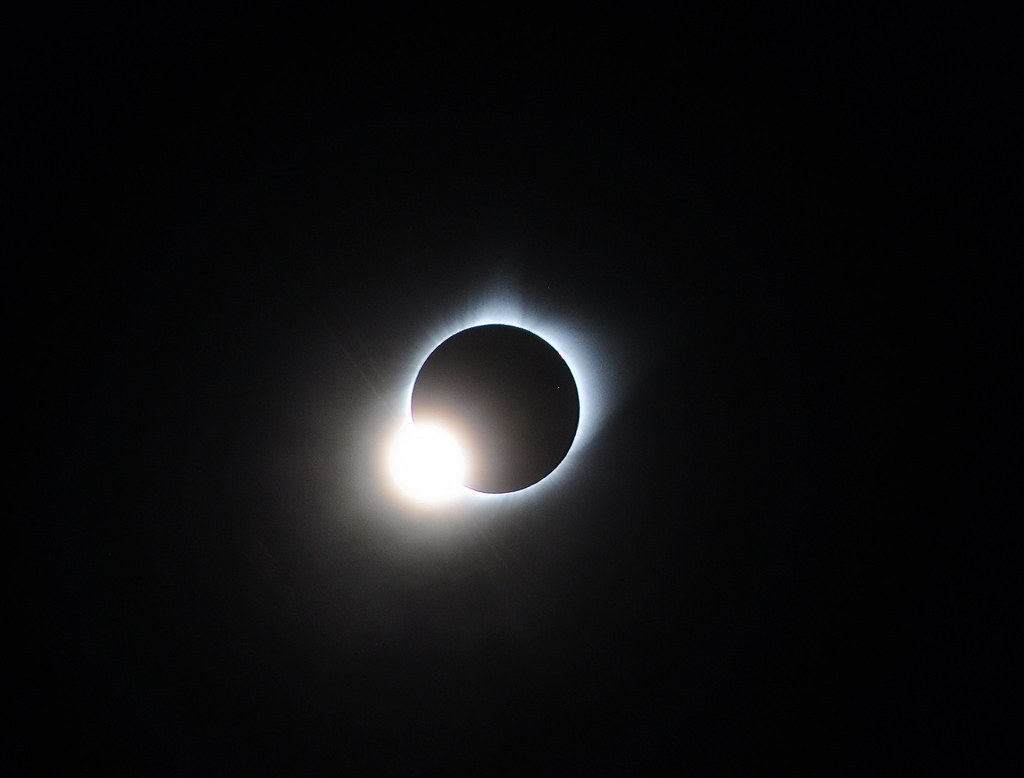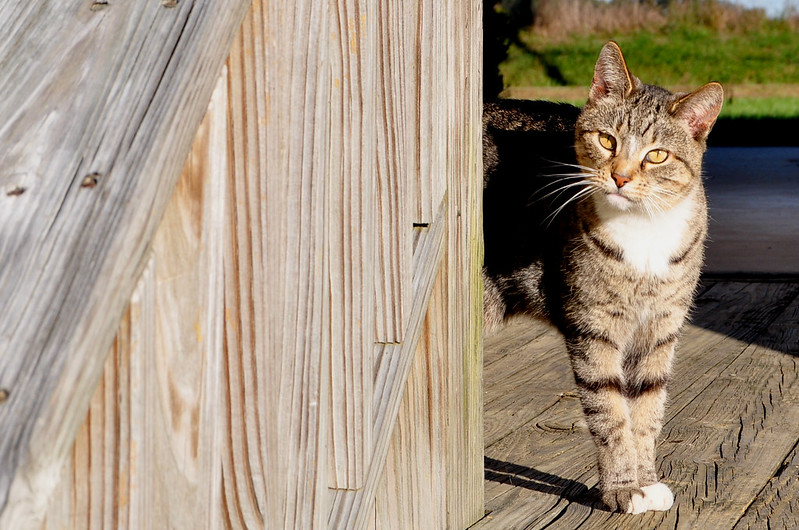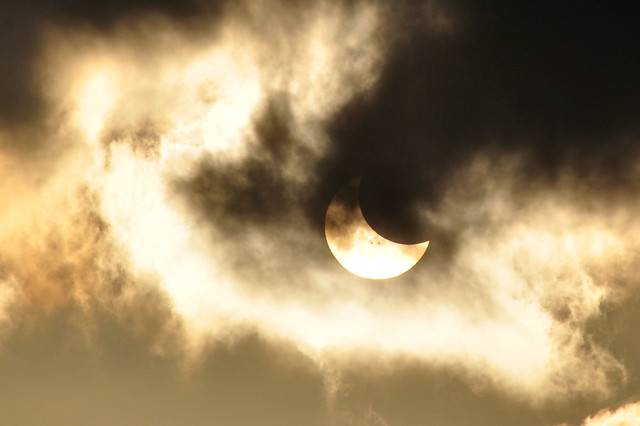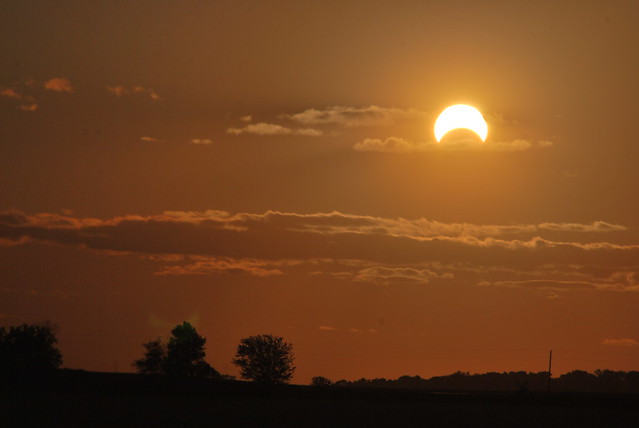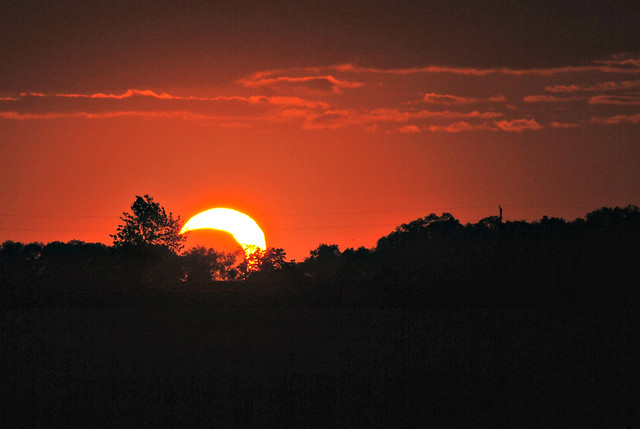Showing posts with label Sun. Show all posts
Showing posts with label Sun. Show all posts
Wednesday, August 23, 2017
Eclipse over Fairmont, Nebraska
A total solar eclipse is something to behold. I have seen partial solar eclipses and thought highly of them, especially if the foreground had some interesting objects or the sun's surface had sunspots. This was my first visit to the zone of totality. It brought me to Fairmont, Nebraska where about 5,000 other eclipse enthusiasts gathered on Monday, August 21 to view the event.
The morning leading up to the eclipse was filled with clouds from a passing thunderstorm with periods of open blue skies. At totality the sky near the sun was mostly cloud free, which only accented the most wondrous sky event that I have witnessed.
Photos, films and video cannot do the totality event justice because of all the rapidly changing sky conditions, the crowd's reaction, and the grandeur of the what is being witnessed. To see the solar corona develop as the moon completely covers the sun is spectacularly unforgettable.
Do yourself a favor and make plans to see a total solar eclipse in person. For the US, that would be on April 8, 2024. I still have more photos of this event that I will post soon - more of what was happening with the crowds.
Tuesday, August 22, 2017
Fairmont Nebraska Welcomes Diamond Rings at Great American Total Solar Eclipse 2017
What a spectacular event! A total solar eclipse is something that everyone should experience. At a well planned, town hosted site in Fairmont, Nebraska some 5,000 people gathered from all over to see totality on August 21, 2017. I took several photos of eclipse enthusiasts and of course the two celestial orbs doing their dance, that I will post soon.
Here are the two best images of the diamond ring effect direct from Fairmont. The top photo occurred as the moon slowly passed in front of the sun leaving what is termed the diamond ring effect. It lasts only a few seconds but can be seen again as the moon pulls away from the solar disk about two and a half minutes later.
Clouds had been around for most of the morning leading up to the total eclipse. Totality started out with little to no clouds but gained a few more wisps in just a few minutes. The bottom photo shows the exiting diamond ring effect with clouds acting as a frame. Look close and see the solar prominence, large, bright features extending outward from the Sun's surface at the noon to four o'clock position.
Here are the two best images of the diamond ring effect direct from Fairmont. The top photo occurred as the moon slowly passed in front of the sun leaving what is termed the diamond ring effect. It lasts only a few seconds but can be seen again as the moon pulls away from the solar disk about two and a half minutes later.
Clouds had been around for most of the morning leading up to the total eclipse. Totality started out with little to no clouds but gained a few more wisps in just a few minutes. The bottom photo shows the exiting diamond ring effect with clouds acting as a frame. Look close and see the solar prominence, large, bright features extending outward from the Sun's surface at the noon to four o'clock position.
One thing that I learned - even the best photos and videos cannot do justice to the totality experience. So many changes occur in the minutes or seconds before totality - like the rapid darkening of the earth's sky, the slight decrease in air temperature, the expansion of the solar corona and so forth. I'll get more photos posted as soon as I can.
Monday, November 2, 2015
Busy Cat Days
Ever visit a cat? This one is quite friendly and loves to be near people. She has the run of the ranch and is both an indoor and outdoor resident of the house. In mid-October, "Kitty" yes that's her name, liked to stretch on the deck in the afternoon sun.
Playing around with low sun angles, shadows and textures is what this photo is all about.
Thursday, October 23, 2014
Partial Solar Eclipse Seen From Wickiup Hill
October 23, 2014 will be remembered for a spectacular late day solar eclipse around Cedar Rapids, Iowa. The first contact time (the time when the moon initially started its journey across the sun) of roughly 4:33 pm was completely obscured by a thick cloud deck. Later, about 5:15 pm the clouds began to part but did not totally disappear. Acting as a filter, the clouds allowed glimpses of the sun-moon-earth dance.
Look closely at the image of the sun. Those two dots near the solar disc center are actually solar sunspots, extremely large solar storms often larger than the earth. The cloud deck not only acted as a natural filter but also added a dramatic effect to these images.

Finally near 6:02 pm the sun neared the western horizon and shone through a thick atmosphere, turning visibly redder. These scenes were taken from the nature area called Wickiup Hill located north of Cedar Rapids, near the Cedar River.
Labels:
clouds,
Eclipse,
Moon,
partial solar eclipse,
solar eclipse,
Sun
Sunday, May 20, 2012
WOW - Annular Solar Eclipse Seen Near Alburnette, Iowa
From 7:45 to 8:24 pm CDT today local sky conditions were optimum for viewing a celestial sight - an annular solar eclipse. Although watching the alignment at the beginning of the transit was quite bright, clouds and a thickening atmosphere made viewing better with each passing moment. The trick is to fine some interesting foreground structures, minimize lens flare and hope for timely passing thin clouds.
The sun and moon set before the transit completely passed. About 70 percent of the sun was blocked during this pass. Your next chance to see another transit of the sun is June 5 when Venus will move across the disk of old Sol. On August 21, 2017 a total eclipse of the sun will be visible in much of North America. Be there for these - and protect your eyes. Know that.
Tuesday, January 11, 2011
Martha Visits Every Monday Just Stays Until Noon Period
Remember the mnemonic phrase to conjure up the order of our solar system's planets? Sure you do (read the blog's headline.) Much has changed since Astronomy 101 days and this phrase is no longer valid.
Our local solar system consists primarily of the Sun, planets, comets and asteroids. People in charge of keeping order between what-was-once-so and what-is-now decided the outer most planet, Pluto was not large enough to still be classified as a planet. Protest ensued. In the end the icy rock chunk named after the popular Disney character, was demoted to proto-planet status or something like that. About that same time a new ice rock called Sedna was discovered. This cold world is almost Pluto size and orbits further out than the former ninth planet. Today research continues in identifying more solar system member possibilities including the search for whatever still tugs on Neptune - could be the so called Planet X or other matter.
So where does that leave us in the quest to remember the solar system order? For now its just "Martha Visits Every Monday, Just Stays Until Noon" for the Mercury-Venus-Earth-Mars-Jupiter-Saturn-Uranus-and Neptune alignment. No doubt more planet objects in our solar system will be identified beyond Neptune and the memory aid will be adjusted again. Stand by. Know that.
Subscribe to:
Posts (Atom)

